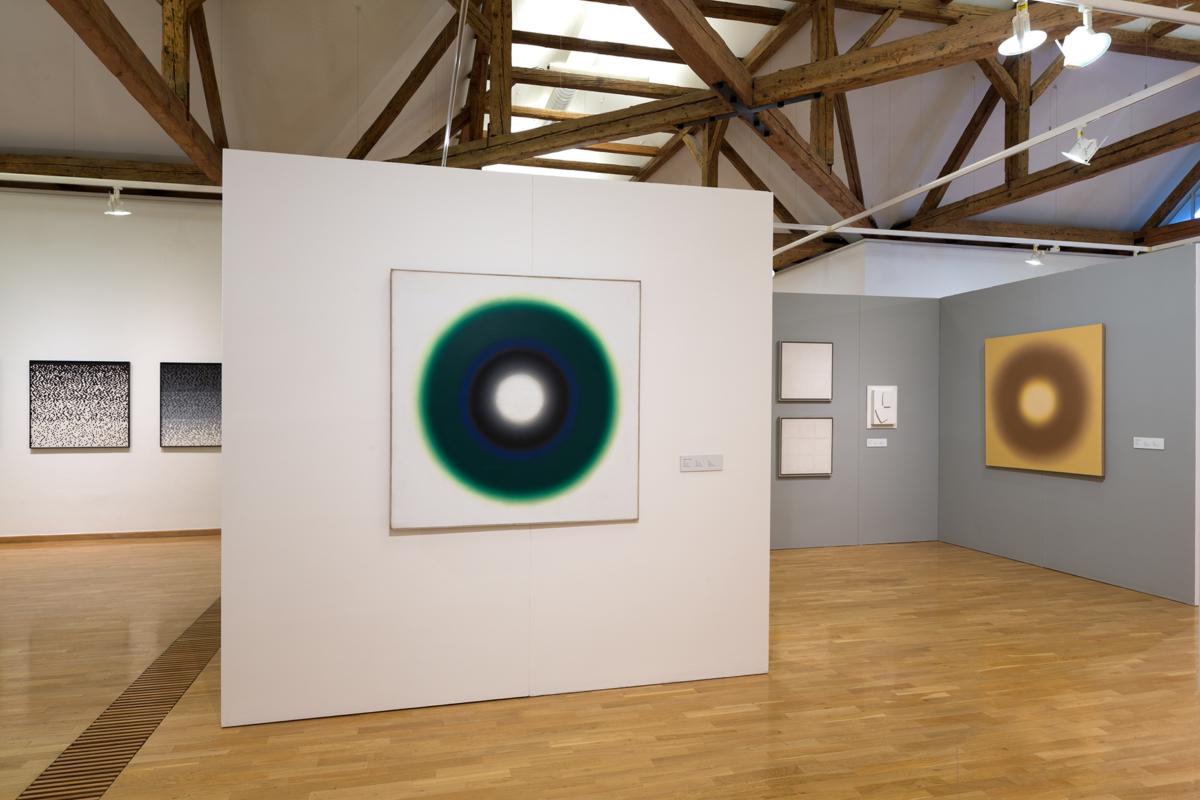
Olomouc, the fifth-largest city in Czech Republic, with just over 100,000 inhabitants, the historical capital of Moravia, a statutory city since the time of the Austro-Hungarian Empire (meaning its administration is set up according to local laws held by the city statute). This may be surprising given the empire fell a century ago, but some Czech cities still retain a statutory structure. Olomouc is home to the seat of the Roman Catholic archdiocese, with its impressive Saint Wenceslas Cathedral and its southern tower (110,65 meters tall) and the Czechoslovakian Hussite diocese – another intriguing aspect given Czechoslovakia hasn’t been around since the 1st of January 1993. Then there’s the eparchy of Olomouc and Brno, with its Czech and Slovak Orthodox Church of Saint Gorazd, built in the neo-Byzantine Russian cathedral style, which holds services not only in Czech, but in the Old Church Slavonic as well.
The sprawling Old Town and its landmark architecture (predominantly of the Renaissance and Baroque style) crowned by the Holy Trinity Column (Sloup Nejsvětější Trojice), a UNESCO heritage site. There is a system of 25 fountains dispersed throughout, some of larger and more elaborate than others, including seven designs in the Baroque style. Walking from the Main Square (Horní náměstí), passing the city hall building, the aforementioned Holy Trinity Column, we will come to two landmark Baroque fountains – the Hercules (Herkulova kašna) and Julius Caesar (Caesarova kašna) – and then head in the direction of Republic Square (náměstí Republiky) to see the Triton Foundation (Kašna Tritonů) on the right side of Denisova Street. At number 47, just before reaching Republic Square, there is an art nouveau building that once housed the city hospital, which today serves as the Modern Art division of the city’s Museum of Art (Muzeum umění) showcasing art from the beginning of the 20th century to the present. Visitors have the opportunity to stroll through the permanent exhibition of works from the institution’s rich collection and its temporary exhibitions – up to three at a time. This summer, Polish art is presiding over the show at Denisova 47.
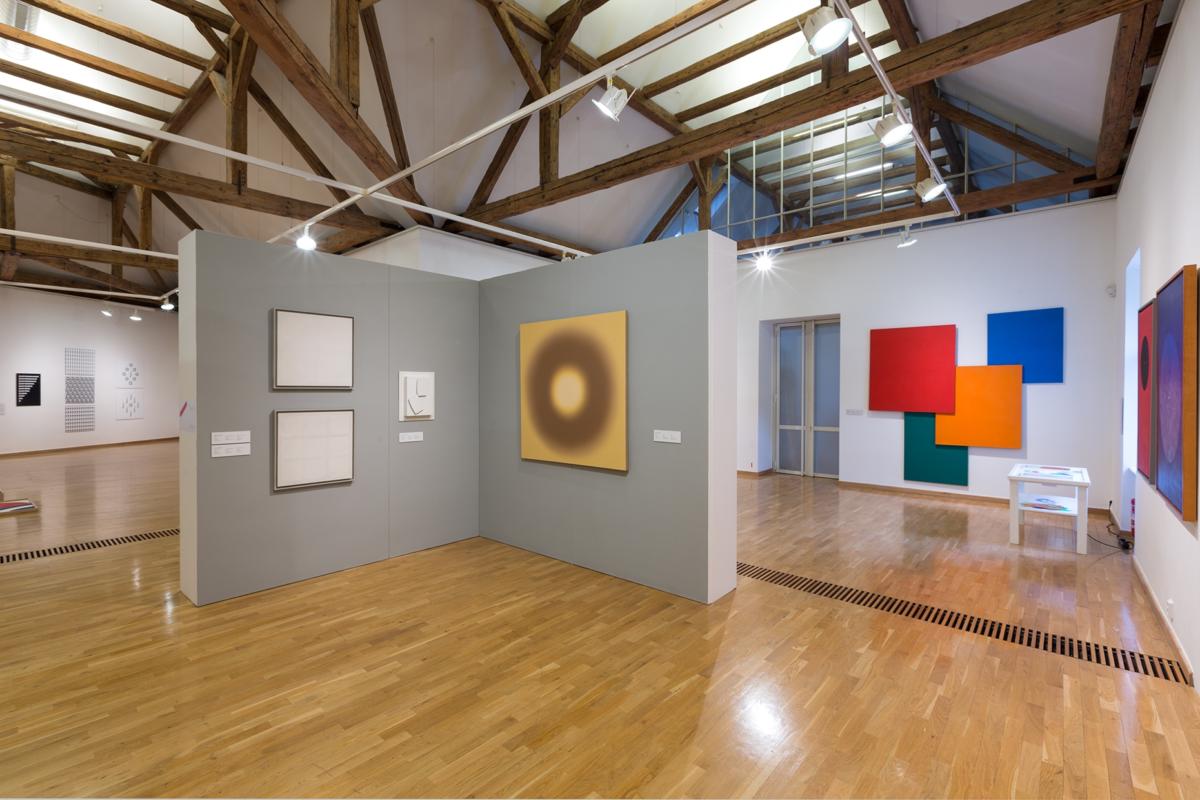
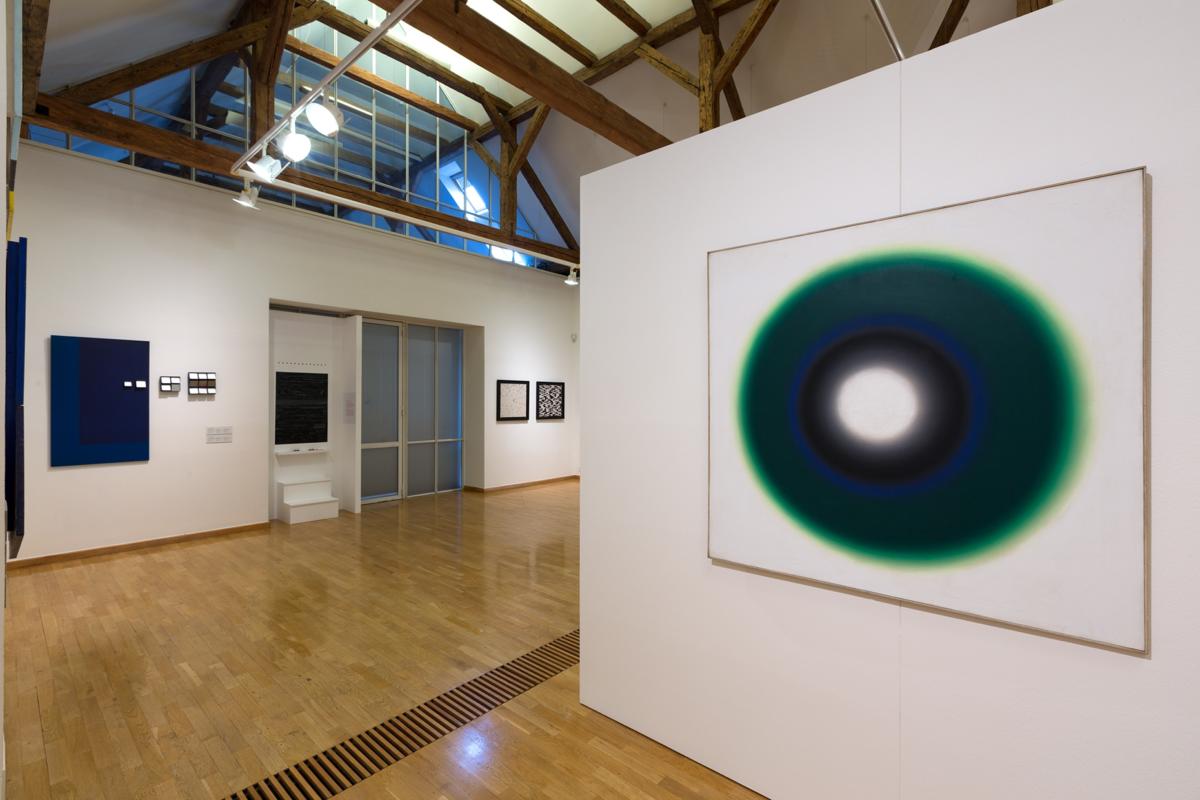
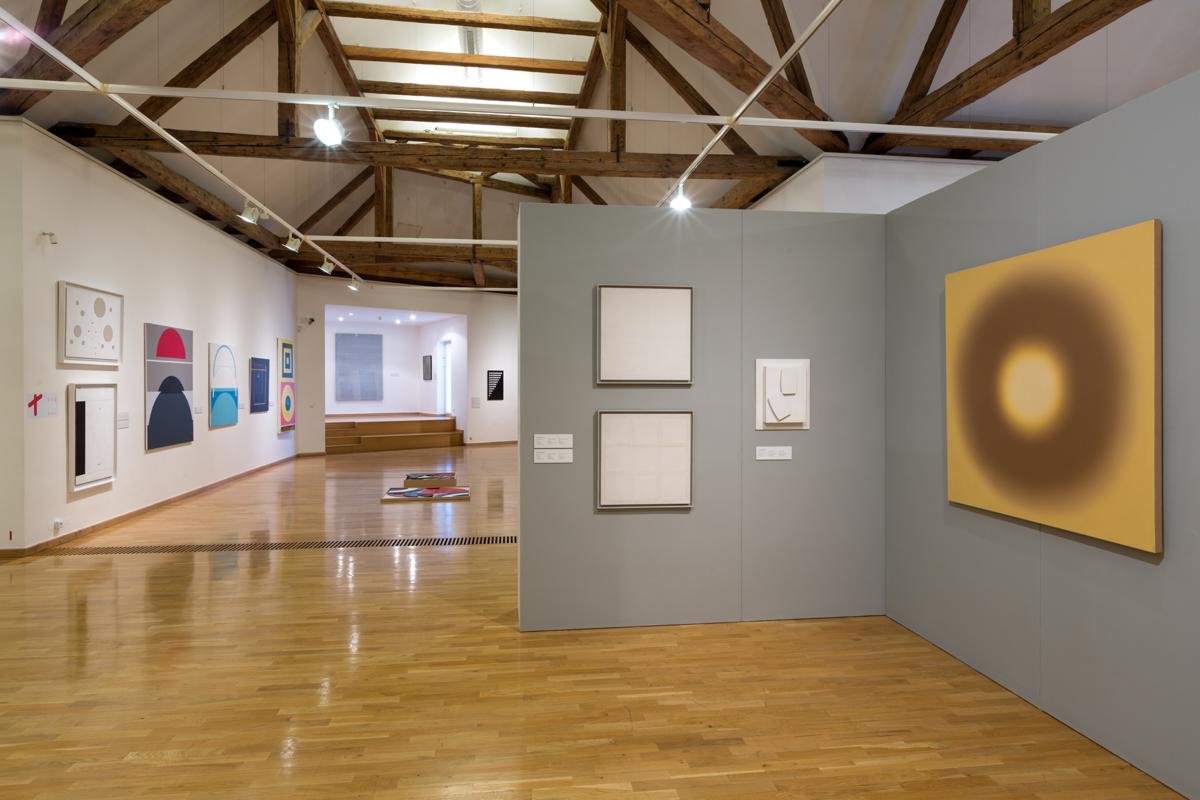
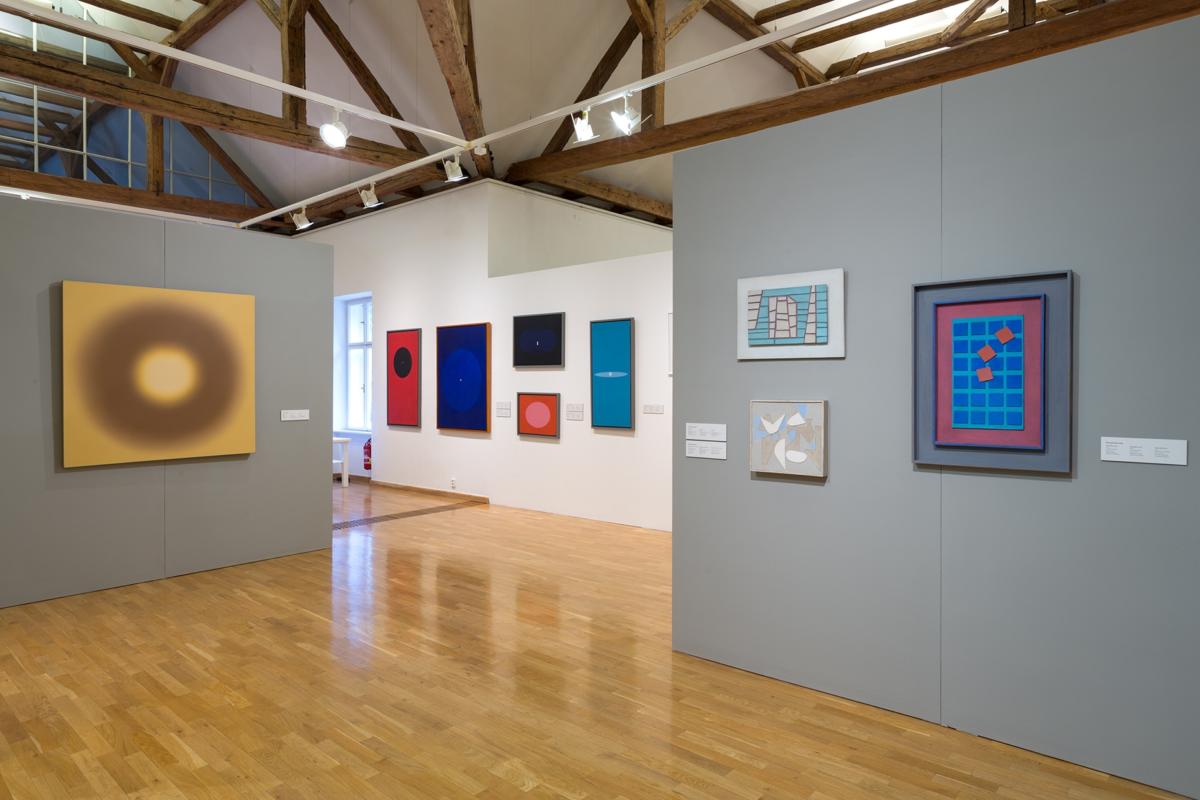
Beginning on the 8th of March, a new look at the permanent exhibition opened, titled A Century of Relativity / Století relativity, presenting a review of art over the last century. The upper floor holds works by Czech and Slovak artists created between 1900-1946, while the floor below covers the years 1947-2000, presenting Czech and Slovak works in the Central European context, also including artists from Poland and Hungary (as of 2007, the Art Museum has placed its focus on the presentation of Central European art, defined as Czech, Slovak, Polish and Hungarian). Among the 142 pieces in the permanent exhibition, several are by Polish artists: Kazimierz Mikulski (1948), Tadeusz Kantor (1950), Alfred Lenica (1956), Janusz Przybylski (1969), Ryszard Winiarski (1973), Jerzy Ryszard Zieliński (1975), Magdalena Abakanowicz (1974-76) and Włodzimierz Pawlak (1985). All but one of the works by Polish artists presented at the exhibition are recent purchases by the museum in Olomouc (between 2009-2012).
The purpose of my visit to the Museum of Modern Art in Olomouc wasn’t, however, to take a look at the permanent exhibition – but, rather, the temporary exhibition. Beginning the 20th of April, in one of its three temporary exhibition spaces, the museum is hosting a show of various themes and trends in Polish abstract painting from 1945 to today. Titled Abstraction.PL (Abstract Art in Polish painting 1945-2017), the show of works by 62 artists was put together by two curators from the Olomouc museum – Ladislava Danka and Dr. Štěpánkę Bieleszovą – based on a concept by Beata Gawróńska-Oramus. Its curators have declared it the first great exhibition of Polish art post-World War 11 in Czech Republic and the territory of former Czechoslovakia.
Collecting art, particularly over the past 100 years hasn’t been among the most straightforward of tasks for many reasons – the idea of art is constantly evolving, while its boundaries are constantly undergoing a process of redefinition.
Beata Gawróńska-Oramus came up with the concept for the show when she was in the city organizing a show of works by Alfred Lenica at the museum. Most of the works in that show came from the collection of Grzegorz Król. The majority of the works in the current exhibition were also drawn from private collections: that of Renata and Grzegorz Król and Grażyna and Jacek Łozowski. Certainly, the personal taste of these collectors had a significant influence on the shape of their acquisitions, so the show was rounded out with pieces from three major Polish public institutions: the Zachęta National Gallery Galerii Sztuki, Museum of Art in Łódź and the National Museum in Warsaw, a move that brought in greater balance. In the statement from museum director Michała Soukupa in the colossal exhibition catalogue (counting 565 pages), we learn that the museum initially intended to organise the show in cooperation with a public cultural institution in Poland but when it turned out that acquiring such a great number of vital pieces from public collections wouldn’t be possible, they turned to people behind two of the most significant Polish collections, owners of a remarkably valuable store of Polish modern and contemporary art – Grzegorz Król in Warsaw and Jacek Łozowski in Wrocław”.[1] The show is all the better for it. It’s good to have such collectors among us, however obvious it may seem: glory to the collectors. Collecting art, particularly over the past 100 years hasn’t been among the most straightforward of tasks for many reasons – the idea of art is constantly evolving, while its boundaries are constantly undergoing a process of redefinition. Acquiring the works of contemporary artists involves a degree of risk and it’s quite right that they should be rewarded with the prize of public presentation. In addition, they deserve some words of recognition for their courage in presenting the works in their collection, exposing themselves to the opinions of others regarding their choices (although “criticism” may be a more apt term than “opinion”).
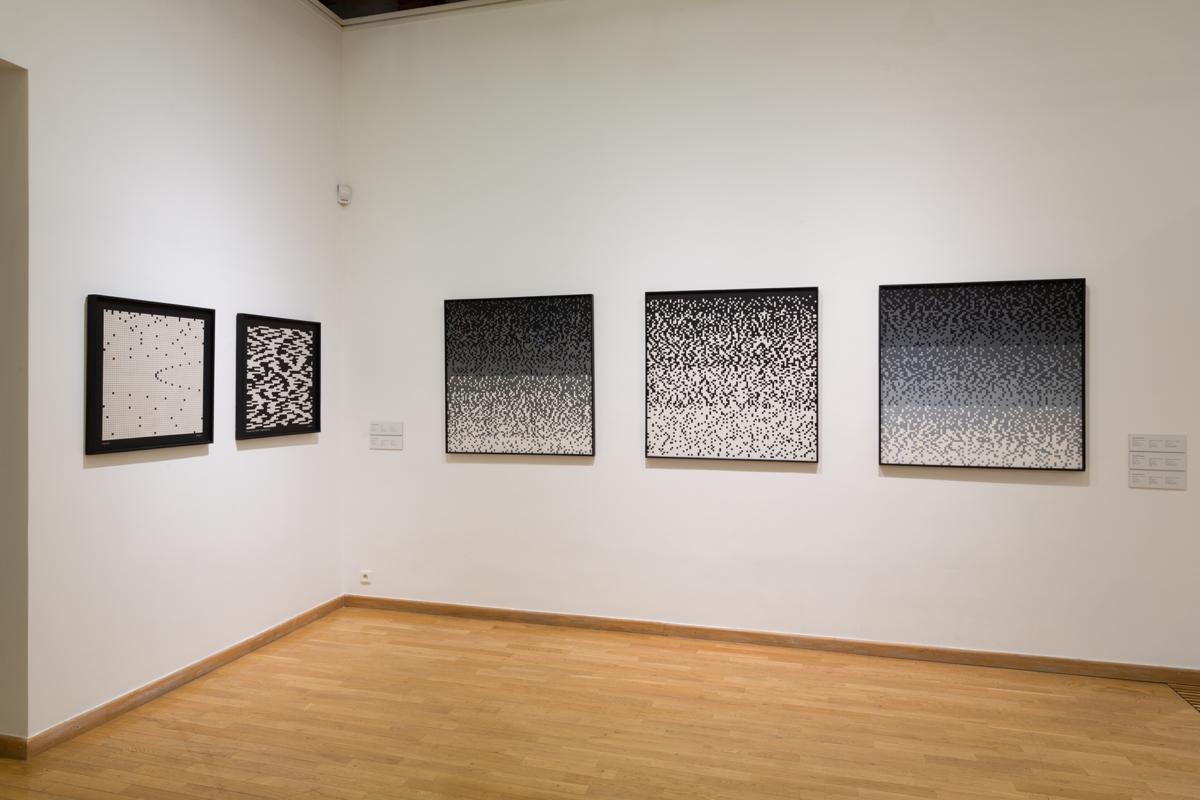
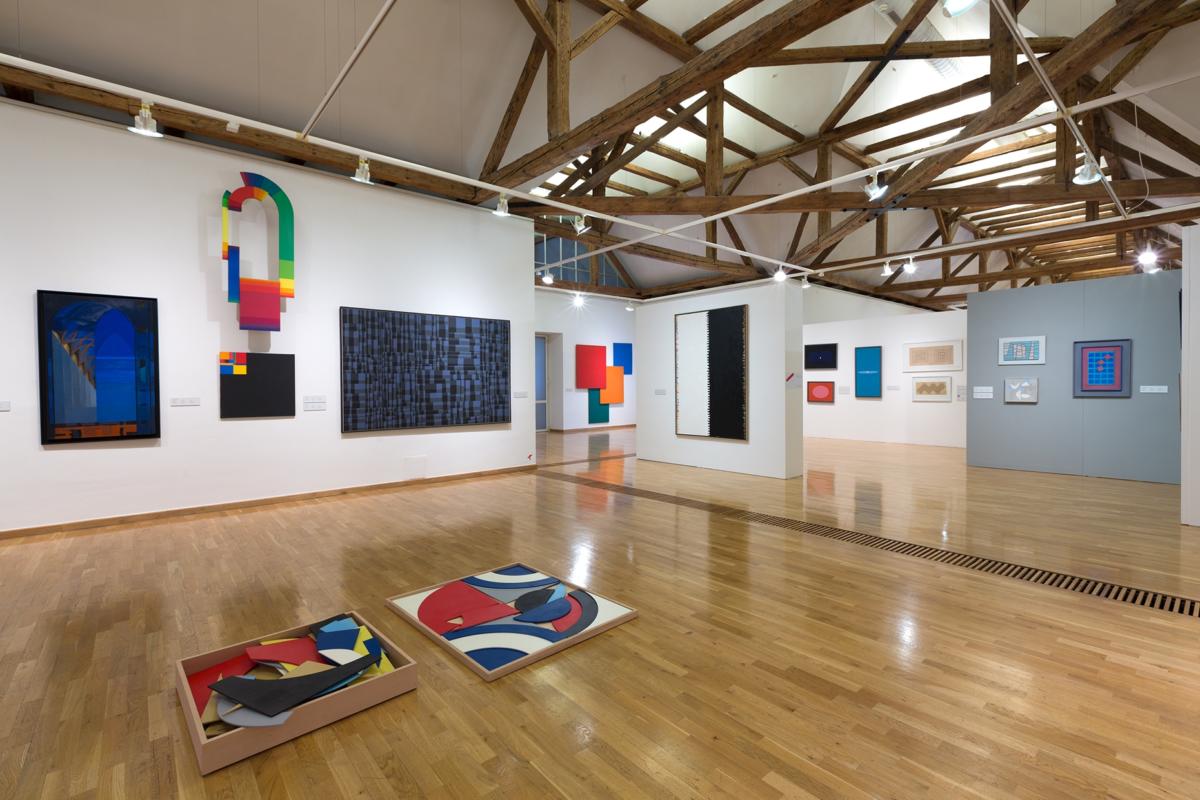

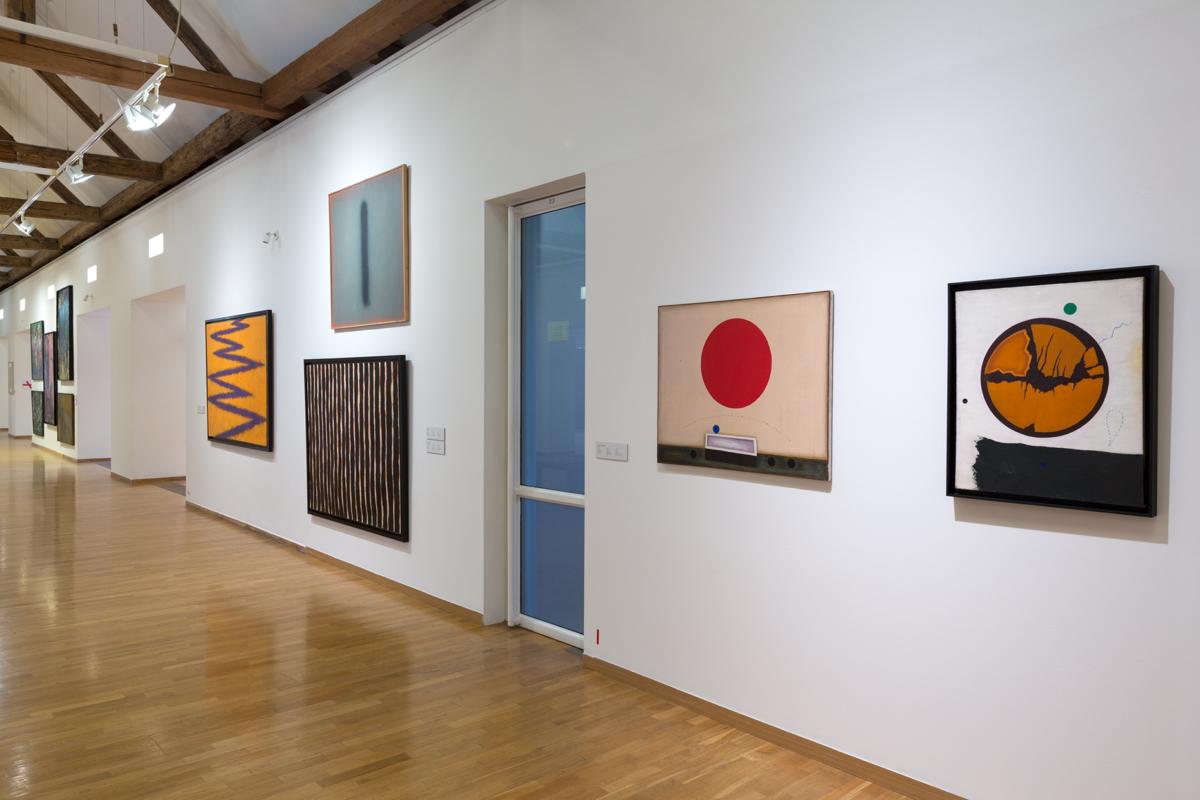
The works at the heart of the exhibition, which come from two diverse collections, with different histories and different themes based on the differences in the tastes among their collectors, which makes setting them together for the show in Olomouc an extraordinary undertaking. It would have been simpler for the curators to have greater liberty in choosing which works they wanted to show. Representation is a key aspect of a review, with the show’s few selected artists serving to describe the whole. Apart from the natural limitations to this effect, the exhibition in Olomouc certainly fulfills the criteria of representation. One might imagine that among the 62 artists on show, we might replace several with another, but the majority of these artists shape an experience of complete knowledge on various themes and trends in Polish abstract painting, in both their emotional and their geometric guises.
Of course, we may find that there aren’t as many examples of objective abstraction and geometric abstraction, but it doesn’t change the fact that the show exemplifies the richness of personalities in Polish art after World War Two. Both styles are well represented. Not all the choices made by the show’s curators are self-explanatory. My high regard for the exhibition doesn’t change the fact that there are no paintings by Zbigniew Gostomski or Jan Chwałczyk, or a number of other artists who worked in the abstract style. The curators’ relatively singular focus on private collections brought in a different scope to the exhibition than it would have had if it had been shaped around the collections of public art institutions. This is the added value that the Olomouc show offers. I’ll venture here to state that an exhibition of this scope would never find a home in a Polish museum of a gallery financed through public funds. The reason is simple – these institutions operate on the basis of certain structures and there’s generally no room for the sort of project that was realised in Czech Republic. The show in Olomouc is for this very reason an extraordinary and worthwhile experience.
To describe the show in a brief text (or even in a few thousand words) is impossible, as is naming all its artists and detailing their works. The exhibition of Polish abstract painting in Olomouc after World War Two through today starts off with the works of Władysław Strzemiński, an icon of the Polish avant garde with world class stature, inspiring interest and admiration for miles. The youngest works in the show are two pieces painted in 2017 by Piotr Lutyński and purchased that same year by Grażyna and Jacek Łozowski for their collection. This is the first time these pieces have been presented to the public.
The curators’ relatively singular focus on private collections brought in a different scope to the exhibition than it would have had if it had been shaped around the collections of public art institutions.
The show in Olomouc features a few more artists whose works aren’t so well known to the public, rarely shown, some even forgotten. This is a highlight of the exhibition. Among those on show is Jerzy Kujawski – a significant figure in Polish abstract painting who emigrated from Poland at the age of 24 and spent most of his life in Paris. He only took up abstract painting for a decade or so, from the end of the 1940s until the late 1950s. He was among the first generation of artists working in Art Informel. His works served as a gateway for a number of Polish artists into the realm of Abstract Art. There are six of Kujawski’s works on show, all but one made between 1955-1960, from the collection of Renata and Grzegorz Król. The works of Kujawski are rarely seen on show, most recently presented at the National Museum in Poznań towards the end of 2005 and at Warsaw’s Zachęta gallery in 2006.
There are two oil paintings by Teresa Tyszkiewiczowa on show, whose unique works have long been sequestered to the sidelines of Polish art. These are intriguing pieces, the first titled Composition (1957) and the second I/66 from the series titled Transition (Przejście) from 1965. The latter, according to the exhibition catalogue, was shown in Poland twice (in Łódź in 1967 and a decade later in Wrocław), although it would seem her status among the Polish art scene after 1945 would merit greater exposure. The former was purchased by Grażyna and Jacek Łozowski and brought back to Poland after being purchased from the London office of the Sotheby’s action house and may well have the opportunity to travel further through the art circuit from this day forward. It’s imperative to note the role of Teresa Tyszkiewiczowa’s works as part of the exhibition in Olomouc as she was a brilliant painter, remarkably active for over half a century. Professor Stanisław Fijałkowski once said the following about the artist, included in the catalogue as a refresher:
The artistic life of Łódź over the past century, when it comes to painting, was dominated by two individuals. In the first half of the century, the front runner of the Łódź milieu was Władysław Strzemiński. […] The second half of our century, however, was dominated by Teresa Tyszkiewiczowa, a few dozen or so years younger than Strzemiński and as much older than the first generation of post-war painters. She was among the most brilliant Polish women painters and one of the most intriguing artiststic personalities in this part of post-war Europe.[2]
This is a vital aspect of this particular show – a cue to recall significant artists and their works, whose achievements may have been pushed to the side as a result of a more generic discourse on art history. This is yet another reason to applaud the collectors for their keen acumen as they stray from the faithful choices dictated by public art institutions.
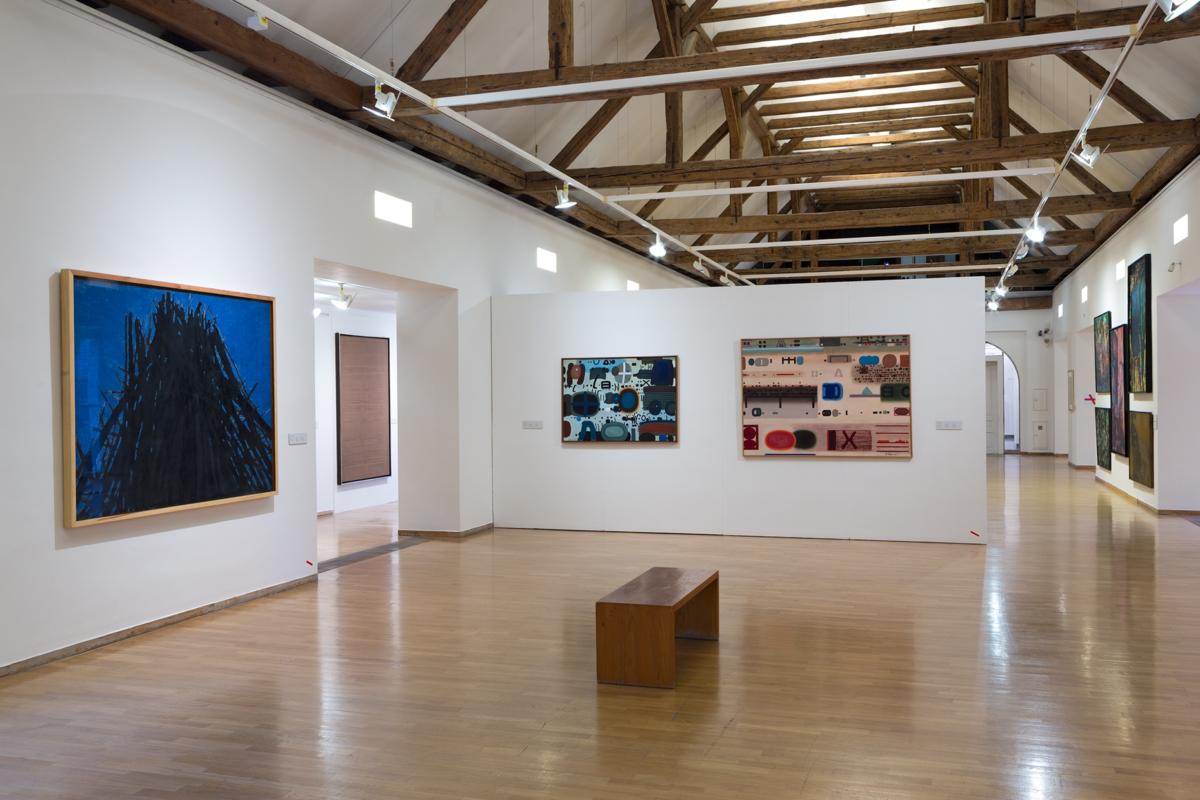
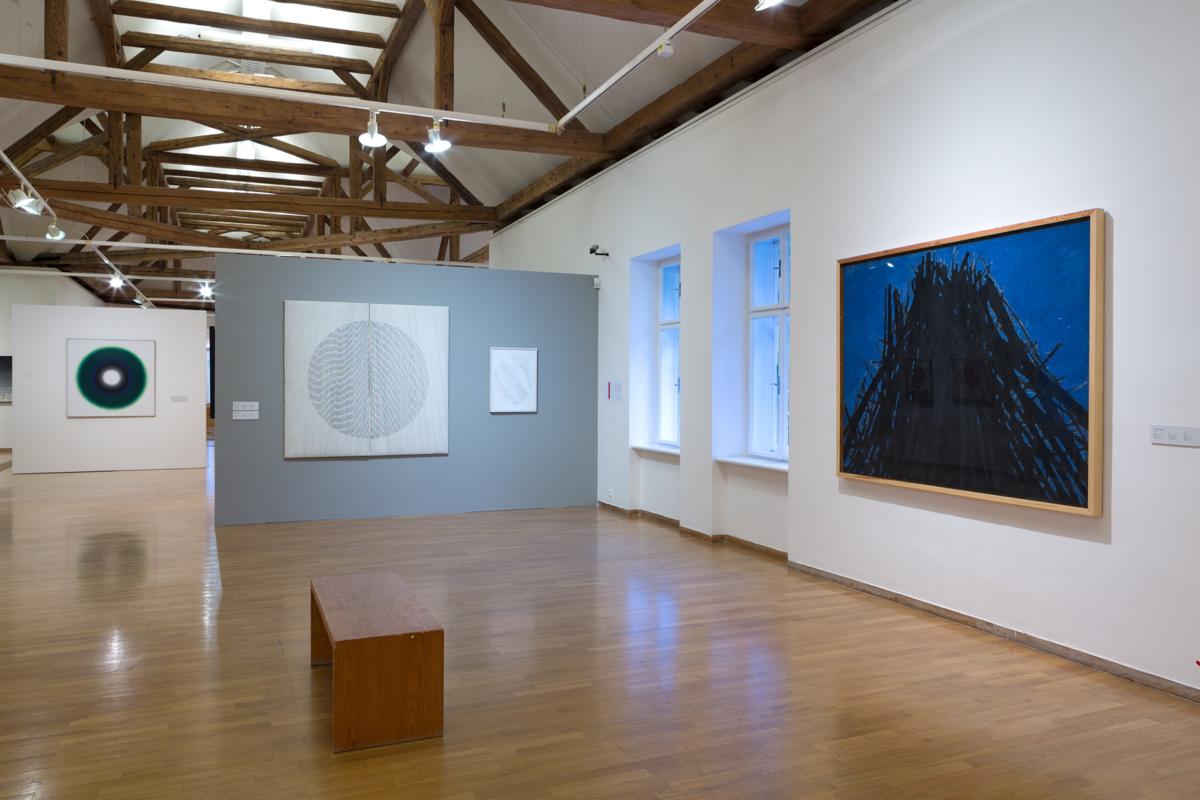

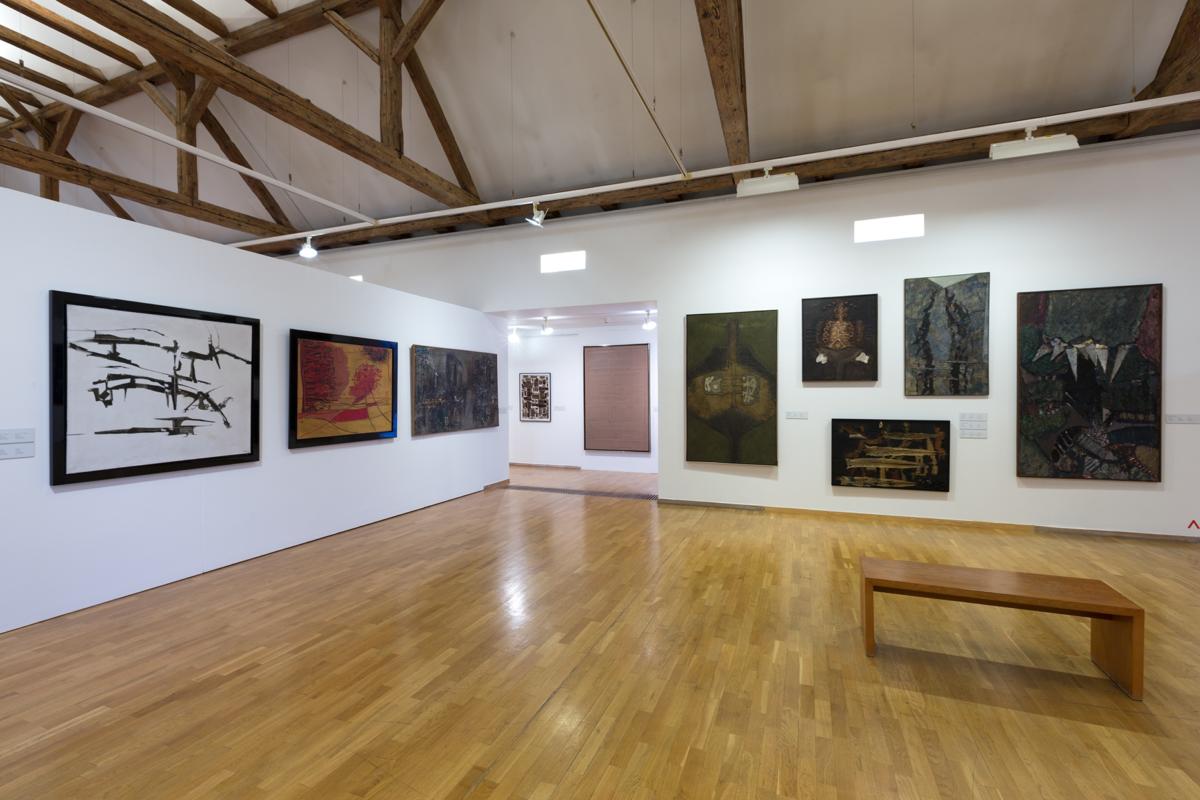
Among the 62 artists in the exhibition is Koji Kamoji – a Japanese artist active on the Polish art scene for over half a century. A Polish artist. His chosen form of expression simple, ascetic, linking eastern philosophy and conceptualism. The effect of his efforts have come about as works that broaden the boundaries of Polish abstract art. The museum in Olomouc presents several of Kamoji’s pieces of recent years, drawn from the collection of Grażyna and Jacek Łozowski.
The wealth of personality and individualism, alongside the diverse scope presented at the exhibition in Olomouc is proof that pre-1989 Poland was nonetheless a period of relative ease in spite of the country’s inclusion in the Eastern Bloc. Poles enjoyed a degree of “freedom” that was greater than in what was then Czechoslovakia. This is another reason the exhibition of Polish abstraction holds an added dimension for Czech visitors, who didn’t have the same access to achievement. Art was one of many ways of disseminating information, with an intrinsically educational aspect. In the case of the exhibition in Olomouc, this dimension plays a considerable role.
The wealth of personality and individualism, alongside the diverse scope presented at the exhibition in Olomouc is proof that pre-1989 Poland was nonetheless a period of relative ease in spite of the country’s inclusion in the Eastern Bloc.
The works on show are distributed across 650 sqm, with many pieces hung rather close together. Yet, as I said, the show has so many more significant attributes that make it a unique, remarkable situation. The show is accompanied by an impressive catalogue in three languages (Czech, Polish and English) featuring astute essays by Krystyna Czerni, Bożena Kowalska and Andrzeja Nakova, along with shorter texts by Michał Soukup and Beata Gawrónska-Oramus that serve as an introduction into the themes considered in the exhibition. The works featured in the catalogue have been divided into eleven groups – with as many explanatory texts. Then there is the exhibition guide by Beata Gawróńska-Oramus on the subject of Polish abstract art after 1945. These following themes are covered: Abstract Art – Strzemiński, Abstract Art in the Era the First Exhibition of Modern Art, Lyrical Abstraction, Metaphorical Abstraction, Surrealism, Abstract Art ad Colourism, Art Informel, Tachism, Gestural Painting, Art Informel – The Matter of Painting, Abstract Art – Between Geometry, Matter, Synthesis of Nature and the Symbol, Geometric Abstraction – Henryk Stażewski, Geometric Abstraction, Geometric Abstraction – Conceptualism and Geometric Abstraction – Continued. The texts are supplemented with the artists’ bios, a full list of all the works on show along with their provenance and prior exhibitions they’ve been included in. The final part of the catalogue is a timeline set around the artists presented in the exhibition against a backdrop of significant historical and cultural events, put together by Beata Gawróńska-Oramus. It serves as a valuable addition to the publication as an original text that seeks to deepen the reader’s knowledge, while summarising and organising that knowledge. Kudos to the authors for their work.
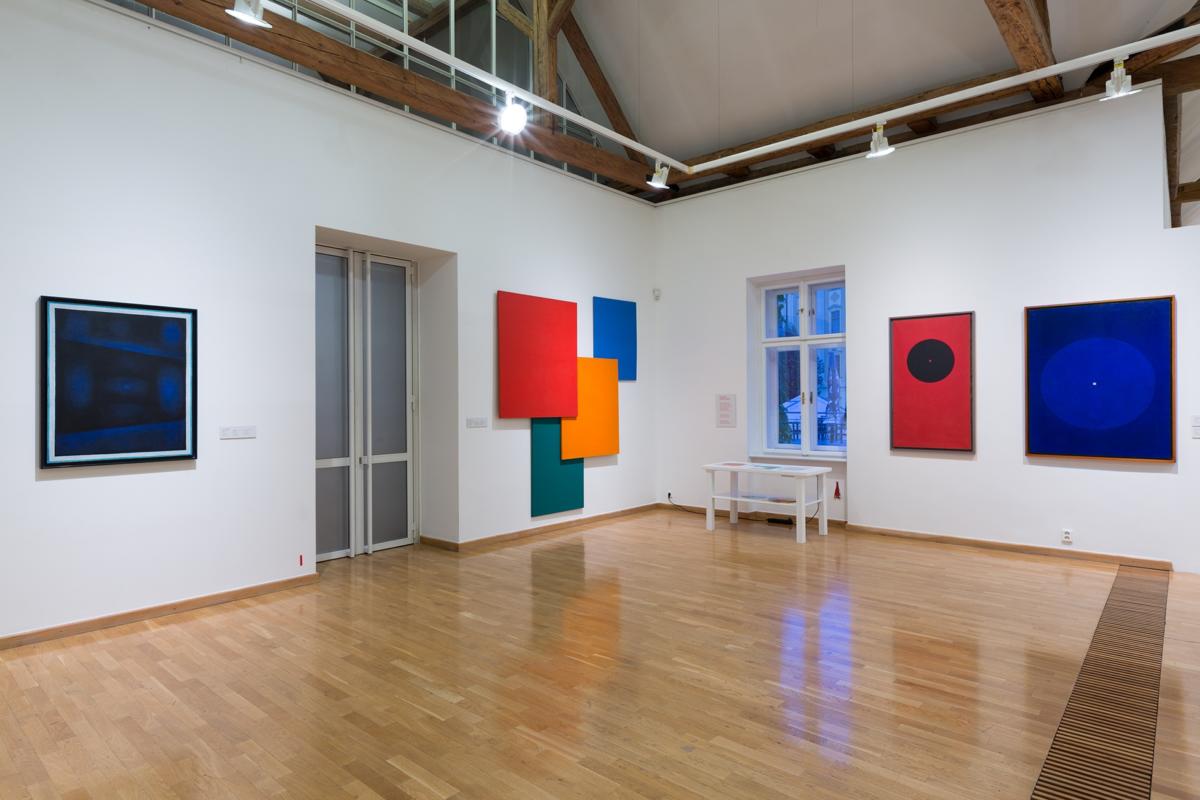
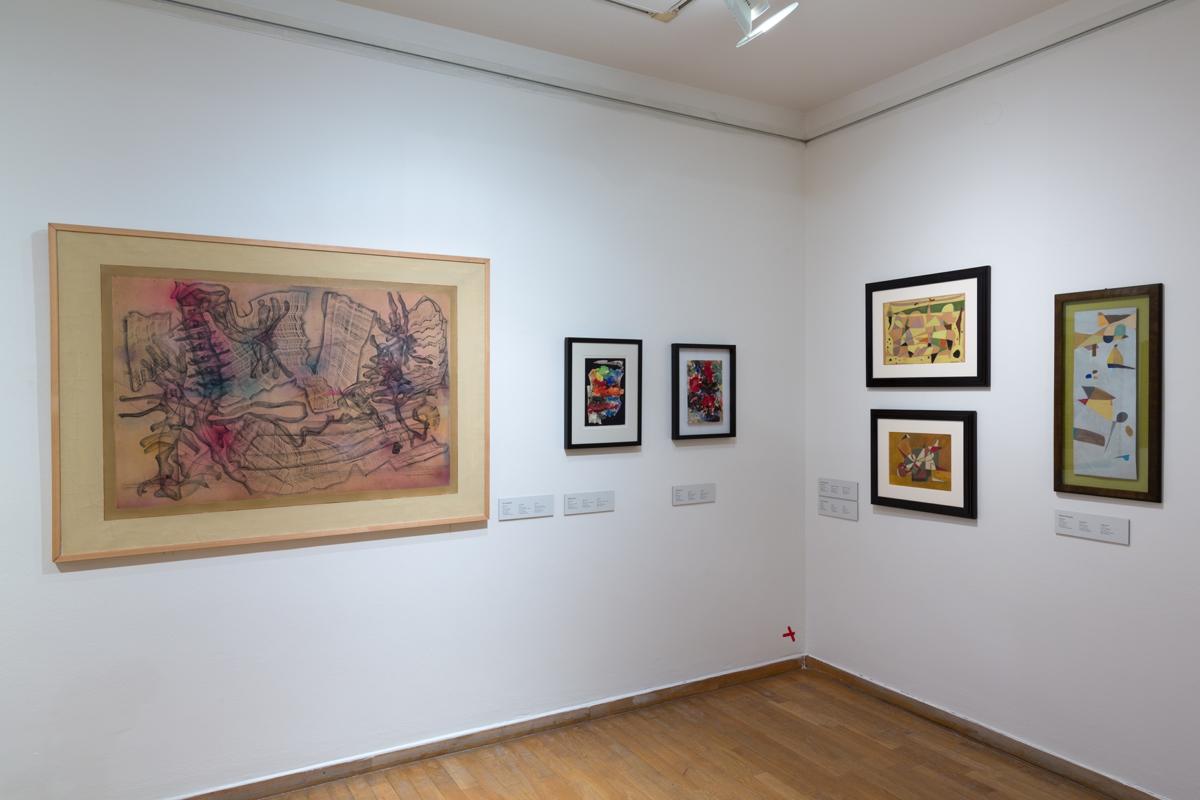
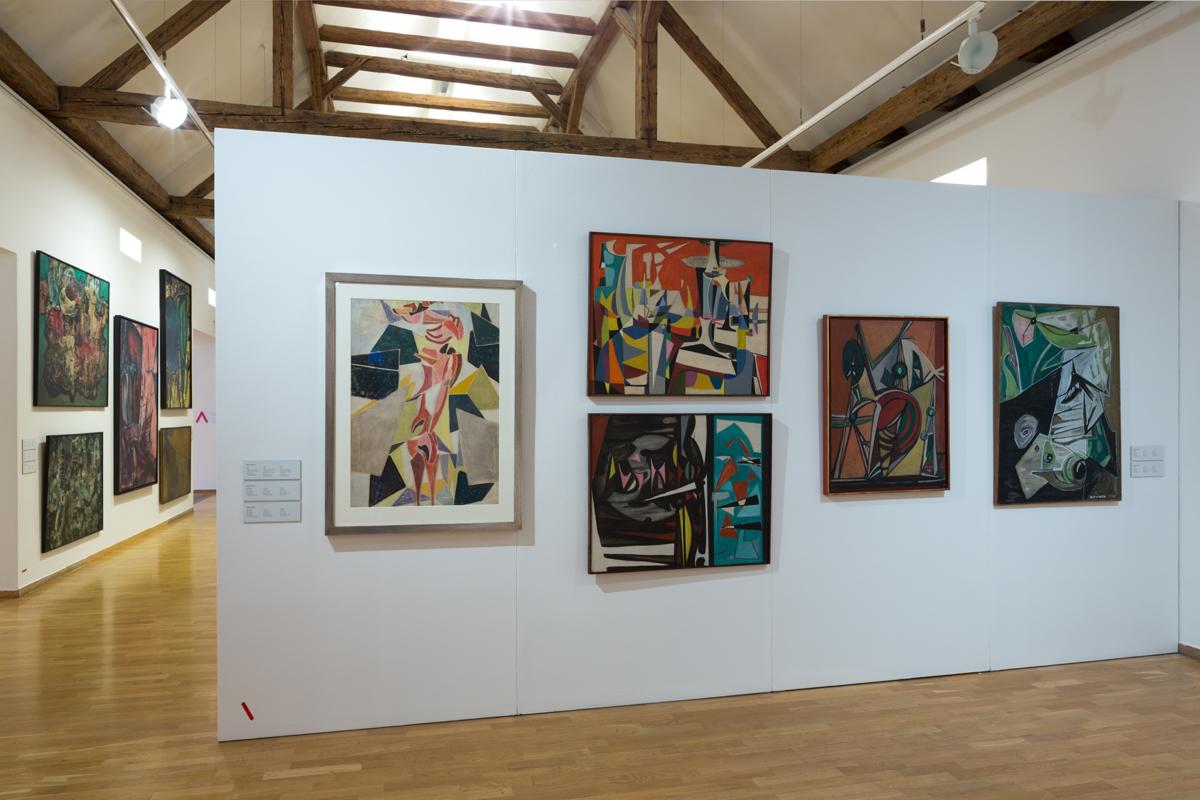
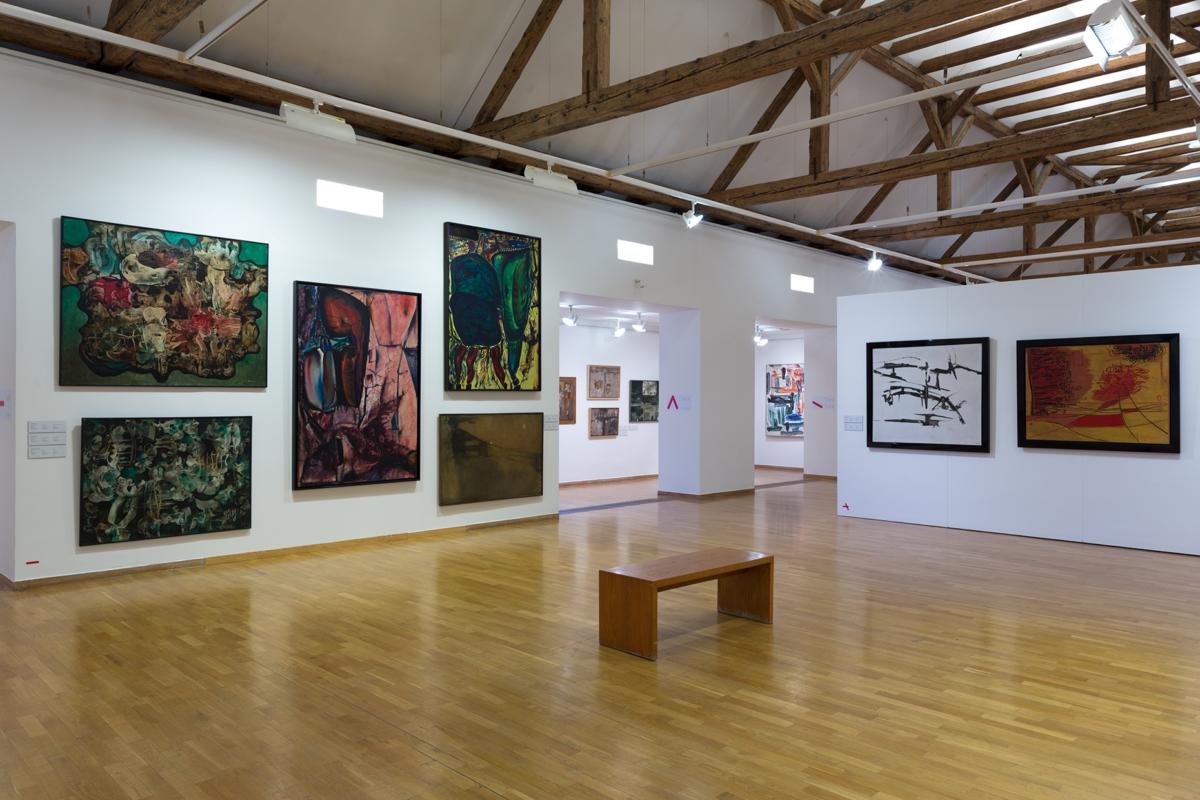
There are three works by Stanisław Dróżdż (from the collection of Grażyna and Jacek Łozowski) on show, a brilliant artist operating at the intersection of visual arts and poetry. One of these is Zapominanie (Forgetting) in which the artist spells out the full word at the top of the painting, while omitting a single letter each addition line, until there is nothing left in the last line but a dot. It’s a wonderful, timeless work of art, its final dot symbolising the last trace of memory and record. Forgetting is a process of the memory, associated with the growing inability to remember, recognise and replicate what was once recorded in the mind. It’s a process that takes place in a single direction, one that can’t be reversed. If something is impossible to reverse, it means that there is no way to turn back to where we began. Considering an irreversible process in the context of thermodynamic change, we can state that a process that is the opposite of irreversible is statistically possible, yet the probability of it taking place is closer to zero. Polish art may not be at risk of being forgotten, yet the exhibition at the Museum of Modern Art in Olomouc pushes that prospect away even further. What more, the show endows Polish abstract art with a fresh context and perspective.
[1] Michal Soukup , Wzmacnianie bliskości i zrozumienia / Strengthening Ties and Understanding, [w:] Abstrakce.PL/Abstrakce w polské malbě 1945-2017/Abstrakcja w malarstwie polskim 1945-2017/Abstract Art in Polish Painting 1945-2017, exhibition catalogue, Beata Gawrońska-Oramus (ed.), Muzeum uměni Olomouc, 2018, p. 13.
[2] Stanisław Fijałkowski, O malarstwie Teresy Tyszkiewiczowej / On the Art of Teresa Tyszkiewiczowa, [w:] Łódzkie Studia Teologiczne, t. IV, 1995, http://archidiecezja.lodz.pl/czytelni/studia/studia.html#H7, accessed 21.06.2018.
Imprint
| Artist | Tamara Berdowska, Jan Berdyszak, Marian Bogusz, Tadeusz Brzozowski, Stanisław Dróżdż, Wojciech Fangor, Stanisław Fijałkowski, Andrzej Gieraga, Stefan Gierowski, Wanda Gołkowska, Józef Hałas, Mieczysław T. Janikowski, Maria Jarema, Jerzy Kałucki, Tadeusz Kantor, Bronisław Kierzkowski, Aleksander Kobzdej, Koji Kamoji, Edward Krasiński, Janina Kraupe, Jerzy Kujawski, Jan Lebestein, Alfred Lenica, Danuta Lewandowska, Piotr Lutyński, Adam Marczyński, Jadwiga Maziarska, Alfons Mazurkiewicz, Kazimierz Mikulski, Michał Misiak, Jerzy Nowosielski, Roman Opałka, Romuald Oramus, Janusz Orbitowski, Jan Pamuła, Włodzimierz Pawlak, Piotr Potworowski, Józef Robakowski, Erna Rosenstein, Jerzy Rosołowicz, Teresa Rudowicz, Jacek Sempoliński, Jerzy Skarżyński, Marek Sobczyk, Kajetan Sosnowski, Jerzy Stajuda, Henryk Stażewski, Jonasz Stern, Władysław Strzemiński, Wacław Szpakowski, Bogusław Szwacz, Leon Tarasewicz, Jan Tarasin, Tomasz Tatarczyk, Jerzy Tchórzewski, Teresa Tyszkiewicz, Marian Warzecha, Tadeusz Gustaw Wiktor, Ryszard Winiarski, Marek Włodarski, Jan Ziemski, Rajmund Ziemski |
| Exhibition | Abstrakce.PL (Abstrakcja w malarstwie polskim 1945-2017/ Abstrakce v polské malbě 1945-2017 / Abstract Art in Polish Painting 1945–2017. |
| Place / venue | Muzeum moderního umění, Olomouc |
| Dates | April 20 – August 19, 2018 |
| Curated by | Štěpánka Bieleszová, Ladislav Daněk |
| Website | www.muo.cz |
| Index | Adam Marczyński Aleksander Kobzdej Alfons Mazurkiewicz Alfred Lenica Andrzej Gieraga Bogusław Szwacz Bronisław Kierzkowski Danuta Lewandowska Edward Krasiński Erna Rosenstein Henryk Stażewski Jacek Michalak Jacek Sempoliński Jadwiga Maziarska Jan Berdyszak Jan Lebestein Jan Pamuła Jan Tarasin Jan Ziemski Janina Kraupe Janusz Orbitowski Jerzy Kałucki Jerzy Kujawski Jerzy Nowosielski Jerzy Rosołowicz Jerzy Skarżyński Jerzy Stajuda Jerzy Tchórzewski Jonasz Stern Józef Hałas Józef Robakowski Kajetan Sosnowski Kazimierz Mikulski Koji Kamoji Leon Tarasewicz Marek Sobczyk Marek Włodarski Maria Jarema Marian Bogusz Marian Warzecha Michał Misiak Mieczysław T. Janikowski Museum of Modern Art in Olomouc Piotr Lutyński Piotr Potworowski Rajmund Ziemski Roman Opałka Romuald Oramus Ryszard Winiarski Stanisław Dróżdż Stanisław Fijałkowski Stefan Gierowski Tadeusz Brzozowski Tadeusz Gustaw Wiktor Tadeusz Kantor Tamara Berdowska Teresa Rudowicz Teresa Tyszkiewicz Tomasz Tatarczyk Wacław Szpakowski Wanda Gołkowska Władysław Strzemiński Włodzimierz Pawlak Wojciech Fangor |
